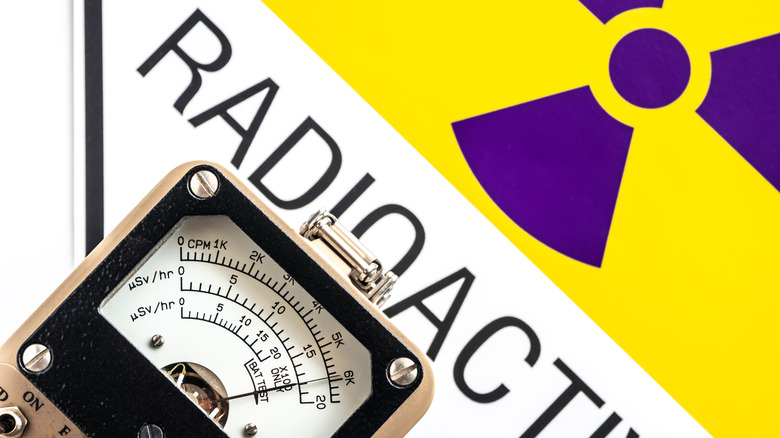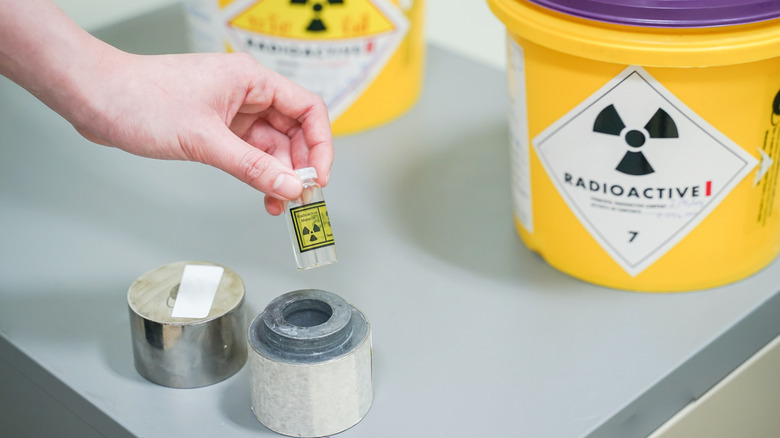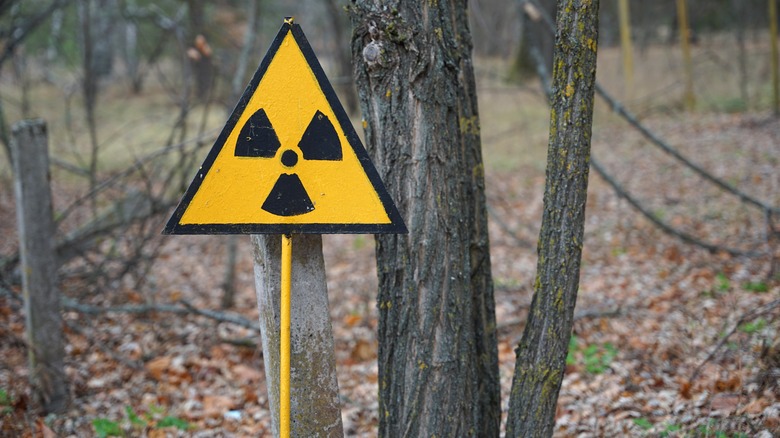Why Are Half-Life Measurements Used?
Half-life measurements are used in a wide range of applications in various fields of science (via Britannica). The term 'half-life' often comes up in conversations surrounding radioactivity, archaeology, carbon dating, geology, chemistry, physics, and more, but the term itself can be confusing. After all, what does a half-life mean anyways, and why is it so important in so many fields of science?
Knowing the half-life of a radioactive isotope is an important part many scientific endeavors. For one, knowing the half-life of a radioactive isotope can help scientists determine when radiation levels in an area are too high. This can be especially helpful for determining when an area will be safe to enter again after a nuclear disaster. Scientists also use half-life measurements to determine the age of certain materials. One popular form of this is known as carbon dating, which is often used to determine the age of ancient artifacts and remains.
When atoms are unstable, they begin to decay
The center of an atom, know as the nucleus, consists of both protons and neutrons. In most atoms, the forces in the nucleus are balanced. This makes for a stable nucleus, and thus a stable atom. In radioactive materials, the forces are unbalanced, giving the nucleus an excess of energy. This causes the atom to self-destruct, breaking down and decaying. During decay, the atom loses that excess energy by emitting radiation (via Iowa State University Environmental Health and Safety).
Scientists are able to detect radiation using equipment, such as a Geiger counter (via Mental Floss). When the half-life of a radioactive material is known, a scientist can estimate how old something is based on the amount of a radioactive material left. This is useful for determining the age of organic materials, such as fossils, archaeological artifacts, and ancient human remains (via Earthsky). Knowing the half-life can help scientists pinpoint ancient disasters, where a written record of such an event may be incomplete or simply not exist.
Radioactive materials decay at an exponential rate
In order to understand what a half-life is, it is important to understand that radioactive materials decay at an exponential rate. This means that rather than decaying at a fixed speed, a radioactive material will decay by a consistent percentage rate (via Thought Co.). The first half of a radioactive isotope will decay at the same rate as half of what is left after.
Essentially, the rate at which a radioactive material decays is proportional to the amount of material that is left (via Mental Floss). As it decays, less material will be there, so it will decay slower. According to Dr. Michael Dee, a researcher at Oxford University's radiocarbon lab, "many [radioactive particles] will disappear early on in the process, but some will last for much longer time periods." This can be a bit confusing at first glance, but scientists use mathematic formulas to make working with half-lives easier.
There are some misconceptions about the term 'half-life'
The term 'half-life' is frequently misunderstood. Since most people don't see many examples of exponential decay in their daily lives, it can be easy to assume that radioactive materials decay at a constant rate. While this is understandable, it is important to note that the entirety of a radioactive material does not decay at the same speed (via Mental Floss). As Dr. Michael Dee puts it, "it doesn't matter how much radioactive material you have, the time taken until half of it is gone is always the same."
If a radioactive material were to decay at a constant rate, the first half of its decay and the second half would take the same amount of time. Instead, after half the material is gone, another half of what is left (in this case, a quarter of the original amount) will decay at the same rate. This means that as a radioactive material decays, the rate at which is decays will slow (via Thought Co.).
Radioactive isotopes never fully disappear... sort of
Mathematically speaking, a radioactive isotope can never fully disappear. This is because it will just continue to break down half of the remaining radioactive material indefinitely. It can never reach zero, because it will only ever break down half of whatever is left. This is why measuring the total lifespan of a radioactive isotope is somewhat useless in science, as there isn't a defined end point of a radioactive isotopes life.
The good news is, radioactive isotopes do eventually decay into harmless materials (via the United States Nuclear Regulatory Commission). While radioactive isotopes may never fully decay in a math formula, real life is a bit less strict than that. Radioactive materials do reach a point where there is little to no measurable levels of radiation left. One example of this is the trace, but harmless, amount of radioactive elements found in bananas. The time it takes radiation levels to decrease can vary greatly depending on the isotope. For example, polonium-214 has a half-life of a mere 0.16 milliseconds, while uranium-238 has a half life of 4.5 billion years (via Radioactivity.eu.com).
Half-life measurements are important for radioactive dating
Knowing the half-life of radioactive isotopes is important for radioactive dating. Scientists use radioactive dating to calculate the age of materials like rocks, remains, artifacts, and more (via the Australian Museum). If the half-life of an isotope is known, then the amount of that radioactive isotope that is left can help scientists determine a rough age for the material.
Half-life measurements are a vital part of learning about the geological structure of the Earth, as well as dating archaeological remains and objects. Scientists use the half-life of radioactive isotopes to determine the ages of things that would otherwise remain unknown. This allows them to peek into the past, discovering things about how the Earth was formed and how ancient societies functioned, especially our earliest ancestors. The hope is to discover things about Earth and humanity that may not be recorded in written history.





